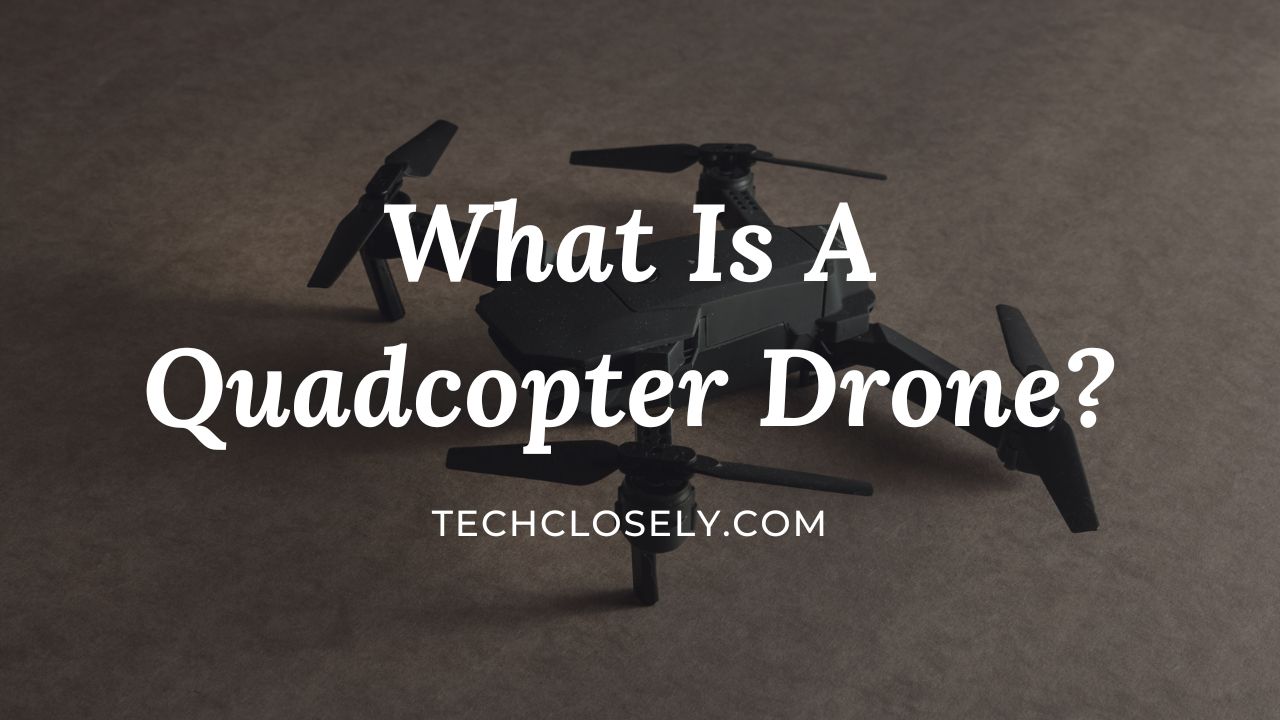Drones have become increasingly popular in recent years, capturing our imagination with their aerial capabilities and endless possibilities.
Among the different types of drones available, quadcopter drones have emerged as one of the most versatile and widely used options. But what exactly is a quadcopter drone?
A quadcopter drone is a specific design of an unmanned aerial vehicle (UAV) that features four rotors arranged in a square or “X” configuration. These rotors, powered by individual motors, enable the quadcopter to generate lift and maneuver through the air with precision. The name “quadcopter” is derived from the combination of “quad” (meaning four) and “copter” (short for helicopter).
Unlike traditional helicopters, quadcopters utilize four rotors instead of a single main rotor and a tail rotor. This design provides several advantages, including enhanced stability, agility, and control.
By independently adjusting the speed and direction of each rotor, a quadcopter can achieve controlled flight maneuvers, such as ascending, descending, hovering, and turning.
These rotorcraft drones can be controlled remotely by a human operator using a remote control or a mobile device. They can also operate autonomously through pre-programmed flight paths and advanced navigation systems.
Many quadcopters are equipped with built-in cameras and gimbals, allowing them to capture stunning aerial photographs and videos from various perspectives.
The applications of quadcopter drones are vast and ever-expanding. From aerial photography and videography to industrial inspections, surveying, and even delivery services, quadcopter drones have revolutionized numerous industries. Their compact size, maneuverability, and accessibility have made them a popular choice for professionals, enthusiasts, and hobbyists alike.
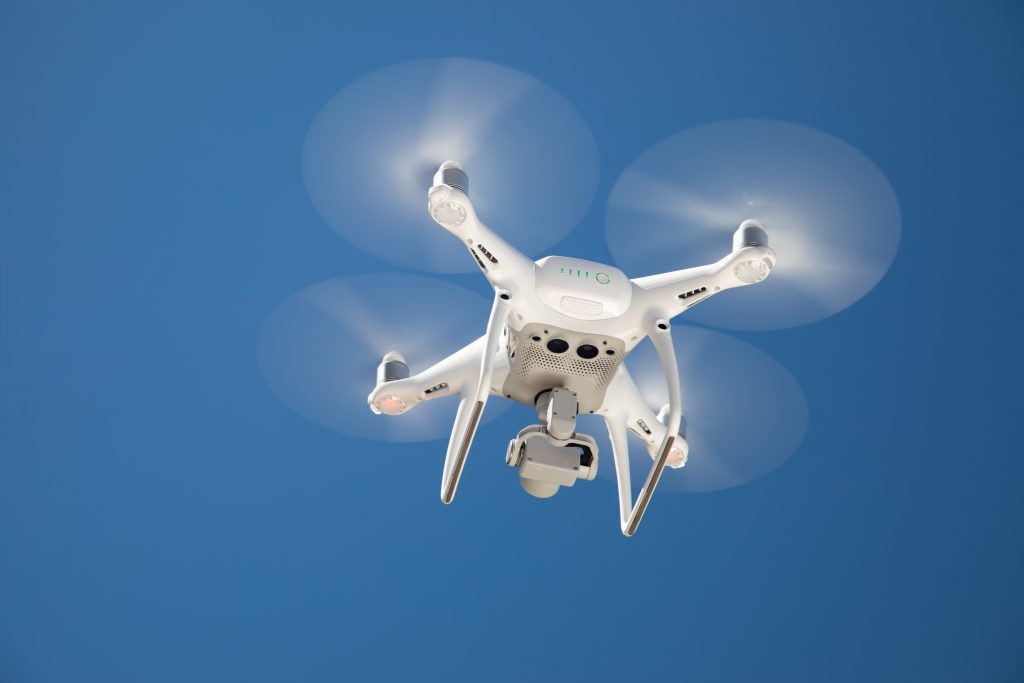
Drone VS Quadcopter
So, how does a quadcopter differ from a normal drone? Let’s explore the differences.
| Drones | Quadcopters | |
|---|---|---|
| Definition | Unmanned aerial vehicles (UAVs) | Specific type of drone with four rotors |
| Design | Can have various rotor configurations | Consists of four rotors arranged in a square |
| Maneuvering | Can hover, ascend, descend, and turn | Can hover, ascend, descend, turn, and perform agile flight maneuvers |
| Stability | Relies on design, sensors, and stabilization systems for stability | More stable due to the balanced rotor configuration and flight control systems |
| Applications | Broad range of applications such as aerial photography, videography, industrial inspections, mapping, delivery services, etc. | Similar applications as drones, but quadcopters are preferred for their stability, maneuverability, and versatility |
| Control | Can be remotely operated using propeller or operate autonomously | Can be remotely operated or operate autonomously |
| Size | Can range from small handheld devices to large, fixed-wing aircraft | Generally smaller in size compared to other types of drones |
| Versatility | Various rotor configurations allow for different flight characteristics and payload capacities | Limited to the four-rotor design, but offers stability and agility |
| Popularity | Drones are a broad category and include various designs, such as quadcopters | Quadcopters are one of the most popular types of drones due to their stability and maneuverability |
It’s important to note that while quadcopters are a specific type of drone, the term “drone” is more commonly used to encompass a wider range of unmanned aerial vehicles with different designs and capabilities.
Quadcopter Features
Quadcopter drones are known for their versatility and wide range of features that cater to various applications and user requirements.
Here are some of the key features commonly found in quadcopter drones, highlighting how they enhance performance, functionality, and user experience.
Remote Control or Autonomous Flight
Quadcopter drones can be operated remotely using a dedicated remote control device or a mobile application. This allows pilots to have full control over the drone’s flight movements, including ascending, descending, hovering, and turning.
Additionally, advanced quadcopters offer autonomous flight capabilities, where they can follow pre-programmed flight paths or perform specific tasks without direct input from the pilot.
Cameras and Gimbals
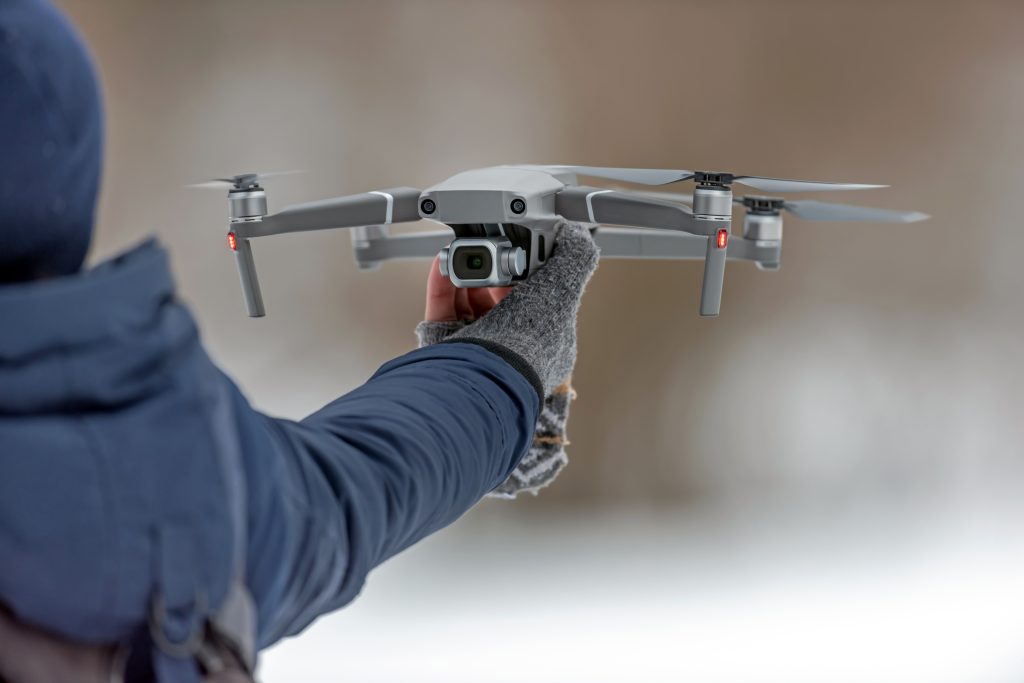
High-quality cameras and gimbals can be adjusted in quadcopters to enable aerial photography and videography. These cameras provide the ability to capture stunning images and record smooth, stabilized videos from unique perspectives.
Advanced models may feature adjustable gimbals that allow for precise camera control during flight, enhancing the quality and flexibility of aerial footage.
GPS Navigation and Waypoint Tracking
Quadcopters often incorporate GPS navigation systems, enabling precise positioning, tracking, and waypoint navigation. Pilots can set specific points of interest or flight paths for the unmanned aircraft to follow, which is particularly useful in mapping, surveying, and inspection applications.
GPS technology enhances the drone’s navigational capabilities, ensuring accurate positioning and stable flight.
Altitude Hold and Stabilization
Quadcopter drones employ altitude hold and stabilization mechanisms to maintain a stable hover and flight position. These features utilize onboard sensors and flight control systems to automatically adjust the power and rotor speeds, compensating for external factors like wind and turbulence.
Altitude hold allows the drone to maintain a specific height, while stabilization mechanisms ensure smooth and steady flight.
Flight Controllers and Sensors
Quadcopters are equipped with flight controllers that serve as the “brain” of the drone. These controllers process sensor data, control the rotor speeds, and ensure stable flight. Sensors such as accelerometers, gyroscopes, and magnetometers provide real-time information about the drone’s orientation, speed, and direction, allowing for precise flight control and maneuverability.
Communication Systems and Remote Control Options
Quadcopter drones feature communication systems that establish a connection between the drone and the remote control device or mobile application.
This communication enables real-time transmission of flight data, camera feeds, and control commands. Additionally, quadcopters may offer various remote control options, including joysticks, touchscreens, or even gesture-based control, providing flexibility and ease of use for pilots.
Portability and Foldable Designs
Many quadcopter consumer drones are designed with portability in mind.
Foldable quadcopters feature collapsible arms or compact frames that make them easy to transport and store. This portability allows users to take their drones on adventures and capture aerial footage from different locations conveniently.
Smart Flight Modes and Intelligent Features
Advanced quadcopter drones often include smart flight modes and intelligent features that enhance the flying experience and creative possibilities.
These may include features like Follow Me mode, where the drone tracks and follows the pilot or a moving object, or Gesture Control, which allows pilots to control the drone using hand gestures. Other features may include object avoidance sensors, return-to-home functionality, and automatic flight modes for capturing cinematic shots.
Quadcopter drones have revolutionized various industries and recreational activities thanks to their rich set of features. From aerial video or photography to industrial inspections and beyond, these features provide users with enhanced control, stability, and creative options.
As technology advances, we can expect further innovations and improvements in quadcopter features, opening up new possibilities and applications for these versatile aerial vehicles.
Quadcopter Benefits
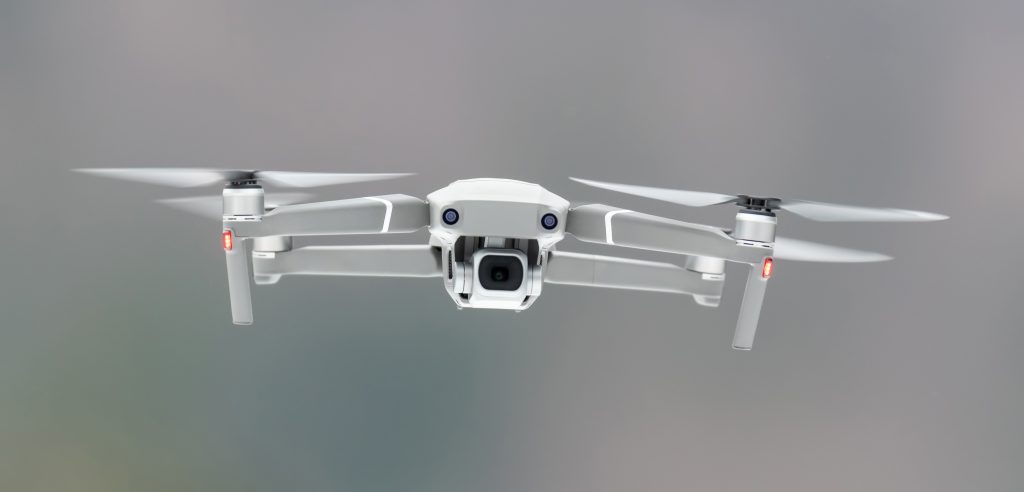
Quadcopter drones have gained immense popularity and are widely used in numerous fields due to their array of benefits. Below are some of the advantages of quadcopter drones, highlighting how they have revolutionized industries, improved efficiency, and opened up new possibilities.
Accessibility and Affordability
Quadcopter drones have become increasingly accessible and affordable, making them available to a wide range of users.
Unlike traditional aircraft or helicopters, quadcopters are relatively inexpensive and can be owned and operated by individuals, small businesses, and hobbyists.
This accessibility has democratized aerial photography, videography, and other applications, allowing more people to explore and utilize drone technology.
Versatility and Maneuverability
Quadcopter drones offer exceptional versatility and maneuverability. Their four-rotor design allows for precise control, enabling flight in tight spaces, complex environments, and even indoor areas.
Quadcopters can hover, ascend, descend, turn, and perform agile flight maneuvers, making them ideal for capturing dynamic aerial footage, conducting inspections, or reaching remote locations that are otherwise difficult to access.
Time and Cost Savings
Quadcopter drones have proven to be valuable tools in various industries, providing significant time and cost savings.
For example, in industries like agriculture, drones equipped with specialized sensors can quickly survey large fields, identify crop health issues, and help optimize irrigation and fertilizer usage.
Similarly, in infrastructure inspections, drones can inspect structures such as bridges, power lines, or wind turbines, reducing the need for manual inspections, which are time-consuming and potentially risky. These applications result in more efficient operations and cost savings for businesses.
Aerial Photography and Videography
Quadcopter drones have transformed the field of aerial photography and videography.
With built-in cameras and stabilized gimbals, quadcopter commercial drones can capture stunning, high-resolution images and smooth cinematic videos from unique angles and perspectives.
Whether it’s capturing breathtaking landscapes, documenting events, or creating captivating marketing content, this drone type can provide photographers and videographers with a new creative tool that was once reserved for expensive aerial platforms.
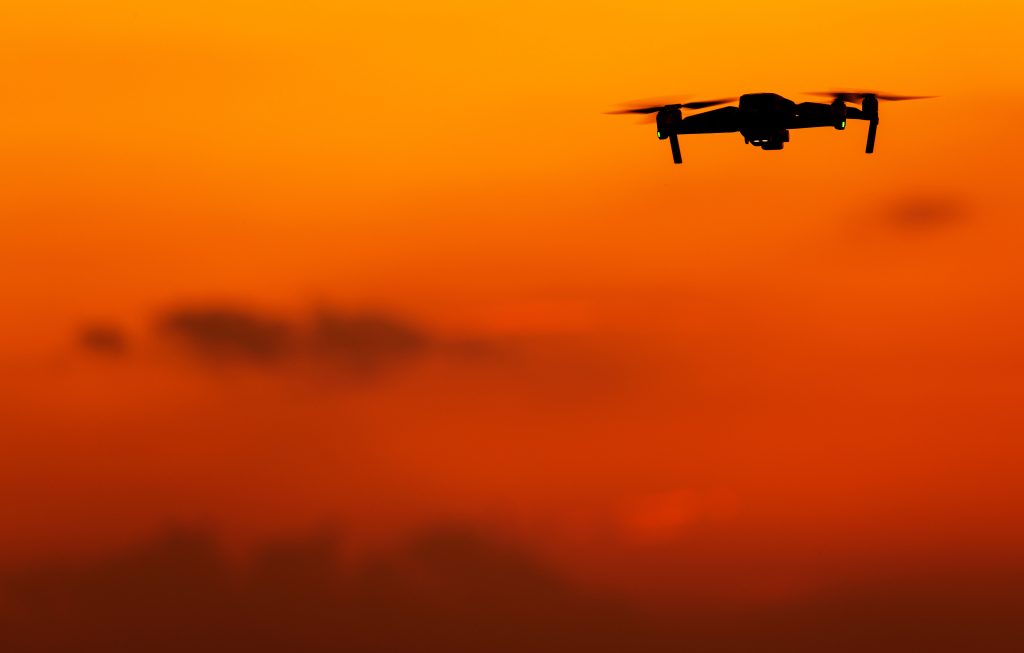
Industrial Applications
Quadcopter drones have found wide-ranging applications in various industries. In construction, they are used for surveying, mapping, and monitoring project progress.
In the energy sector, drones assist in inspecting infrastructure, such as power lines, pipelines, and solar panels, minimizing the need for manual inspections and improving safety.
In search and rescue operations, quadcopters equipped with thermal cameras can aid in locating missing individuals or assessing disaster-affected areas.
The versatility and maneuverability of quadcopters enable them to perform tasks efficiently, accurately, and safely in challenging environments.
Environmental Advantages
Quadcopter drones offer environmental advantages over traditional methods in certain applications.
For instance, in agriculture, drones equipped with precision spraying systems can target specific areas, reducing pesticide usage and minimizing environmental impact.
Drones also enable wildlife monitoring without causing disturbances or habitat disruptions. Additionally, the use of drones for inspections and surveillance can help identify potential environmental hazards, contributing to better environmental management and conservation efforts.
Training and Education
Quadcopter drones have become valuable tools in training and education. They provide hands-on learning opportunities for aspiring pilots, photographers, and engineers.
Drone piloting courses and certifications are now widely available, allowing individuals to develop skills in operating and maintaining quadcopters safely and responsibly.
Additionally, educational institutions incorporate drones into their curriculum, enabling students to explore various disciplines such as aerial mapping, robotics, and environmental studies.
Recreational and Hobbyist Pursuits
Quadcopter drones have captured the interest of hobbyists and enthusiasts, offering new recreational opportunities. Drone racing has emerged as a popular sport, where pilots compete against each other in high-speed quadcopter races.
Aerial acrobatics and freestyle flying also provide a great experience for drone enthusiasts. The availability of affordable quadcopters and dedicated drone communities has fostered a vibrant and inclusive hobbyist culture.
Quadcopter Drawbacks
Quadcopter drones have undoubtedly revolutionized various industries and recreational activities with their versatility and capabilities. However, like any technology, they also come with certain drawbacks and limitations.
Flight Time and Battery Life
One of the primary limitations of quadcopter drones is their relatively short flight time and limited battery life. The flight duration typically ranges from 15 to 30 minutes, depending on the drone model and payload.
This constraint can be problematic for applications that require extended flight times or cover large areas. Users often need to carry multiple batteries or have access to charging facilities to ensure uninterrupted operation.
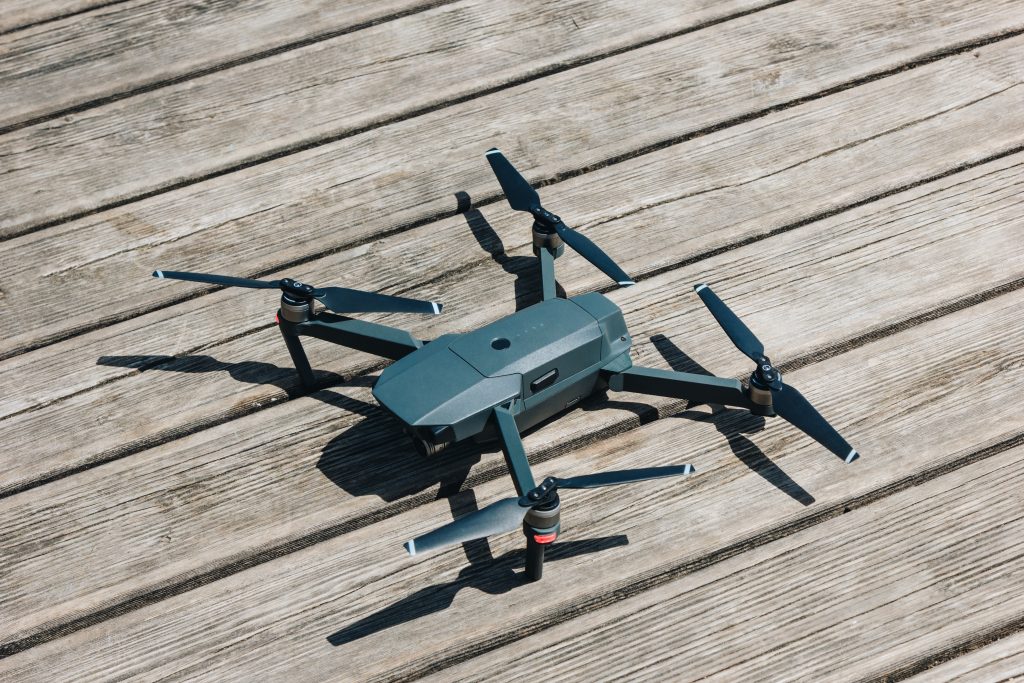
Limited Payload Capacity
Quadcopter drones have a limited payload capacity due to their compact size and design.
While they can carry cameras and other lightweight accessories, their capacity to carry heavy or bulky equipment is restricted. This limitation may impact the suitability of quadcopters for certain industrial applications that require heavier sensors or payloads.
Weather Sensitivity
Quadcopter drones are sensitive to adverse weather conditions, particularly strong winds, rain, and extreme temperatures.
High winds can affect the stability and control of the drone, making it challenging to operate safely.
Rain and moisture can damage sensitive electronic components, while extreme temperatures can negatively impact battery performance and flight stability. Pilots must exercise caution and adhere to weather limitations to ensure safe and reliable operation.
Limited Range and Signal Interference
Quadcopter drones typically have a limited control range, which can vary based on the model and environmental factors.
The range is typically a few hundred meters or up to a few kilometers in more advanced models. Signal interference from obstacles, buildings, or electromagnetic interference can further restrict the effective control range of the drone.
This limitation may impact applications that require long-distance operations or working in environments with significant signal interference.
Regulatory and Legal Considerations
The use of quadcopter drones is subject to various regulatory and legal considerations. Drone operators must comply with local aviation authorities’ rules and regulations, which may include registration, licensing, and adherence to flight restrictions in certain areas.
Additionally, privacy concerns related to aerial photography and surveillance have led to stricter regulations governing drone operations. Keeping up with evolving regulations and ensuring compliance can be a challenge for drone users.
Safety Concerns
Safety is a crucial aspect of operating quadcopter drones. Accidents and incidents involving drones can pose risks to people, property, and other aircraft. Pilots must adhere to safety guidelines and maintain situational awareness to avoid collisions, especially in crowded or populated areas.
Additionally, there have been cases of improper use, such as flying near airports, which can lead to serious consequences.
Ensuring responsible and safe drone operation is vital to maintain public trust and prevent accidents.
Privacy and Security
The use of quadcopter drones equipped with cameras raises privacy concerns. Privacy laws and regulations vary across jurisdictions, and drone operators must respect individuals’ privacy rights when capturing images or videos.
Additionally, there are security concerns regarding the misuse of drones, such as unauthorized surveillance or the potential for drones to carry out malicious activities.
Mitigating privacy and security risks requires responsible drone operation, adherence to regulations, and awareness of ethical considerations.
Skill and Training Requirements
Operating quadcopter drones effectively requires skill, knowledge, and training. Pilots need to understand flight dynamics, navigation, and safety protocols.
Additionally, capturing high-quality aerial footage or conducting specialized applications may require additional skills such as photography, videography, or data analysis. The learning curve for piloting and mastering these skills can be steep, requiring time, practice, and ongoing education.
Conclusion
Quadcopter drones have revolutionized industries, expanded creative possibilities, and provided individuals with access to aerial capabilities that were once out of reach. These versatile unmanned aerial vehicles have become increasingly accessible and affordable, enabling users to explore new horizons in aerial photography, videography, industrial inspections, and more.
Throughout this blog, we have explored the definition of quadcopter drones and delved into their differences with drones, features, benefits, and drawbacks.
Whether you are an aerial enthusiast, a professional in search of innovative solutions, or simply fascinated by the capabilities of these aerial marvels, quadcopter drones offer a gateway to exploration, creativity, and discovery.
In the end, quadcopter drones are not just flying machines; they are powerful tools that empower us to see the world from a new perspective and reimagine what is possible. So, spread your wings, unleash your creativity, and let the quadcopter drone take you on an incredible journey through the skies.

